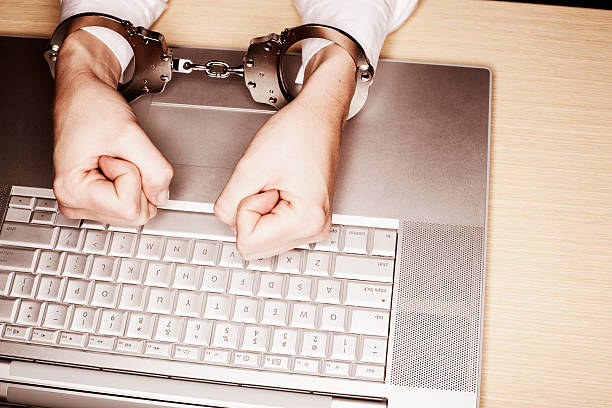
A few years ago, anxiety was everywhere: in headlines, conversations, wellness blogs. But now, there’s a new word on everyone’s lips: burnout. It’s not just about being tired after a long week. Burnout is a state of emotional exhaustion, detachment, and collapse that creeps in slowly, often disguised as stress or “just being busy.”
According to the World Health Organization, burnout is now recognized as an occupational phenomenon, affecting millions worldwide. (WHO) In today’s hustle culture, where productivity is glorified and “rest” feels like weakness, burnout has quietly become the new anxiety.
The scary part? Many people don’t recognize it until it’s too late.
Why Burnout Feels Like the “New Anxiety”
- The Symptoms Overlap
Anxiety, burnout can manifest as racing thoughts, insomnia, irritability, or physical tension. But burnout is more insidious: it’s not just acute worry, it’s long-term depletion. People describe it as “running on empty.”
- Cultural Shifts
Anxiety defined the 2010s. After the pandemic, remote work, and relentless digital overload, burnout has taken center stage. Articles, TikToks, and LinkedIn posts echo the same theme: “I’m exhausted, and I can’t keep up.”
- The Hustle Trap
Unlike anxiety, which has many sources, burnout is often systemic. It’s tied to overwork, blurred boundaries, and constant connection. The modern workplace and technology create an environment where rest feels impossible.
The Hidden Signs of Burnout
Burnout doesn’t show up with flashing lights. It whispers until it shouts. Watch for these subtle clues:
- Chronic fatigue: Waking up tired no matter how much you sleep.
- Cynicism: Detachment, negativity, or resentment toward work or people.
- Decreased performance: Tasks that once felt simple now feel overwhelming.
- Physical symptoms: Headaches, digestive issues, muscle tension.
- Emotional numbness: Not sadness, not anger, just emptiness.
- Self-medication: Relying on caffeine, alcohol, or scrolling to cope.
A 2023 Gallup report found that 76% of employees experience burnout at least sometimes, and nearly 28% report it “very often or always.” (Gallup) Burnout is no longer rare, it’s the new baseline.
The Psychology Behind Burnout
Burnout isn’t just stress. Stress is too much — too many demands, too much pressure. Burnout is not enough — not enough energy, not enough joy, not enough to give.
Psychologists describe three dimensions of burnout (Maslach Burnout Inventory):
1. Exhaustion – feeling emotionally drained.
2. Depersonalization – cynicism and detachment.
3. Reduced accomplishment – loss of productivity and confidence.
It often hits high-achievers, caregivers, entrepreneurs, and anyone immersed in hustle culture. Many wear it like a badge of honor — until their body and mind force them to stop.
The Modern Triggers of Burnout
Our current environment makes it easy to ovBurnout has always existed, but today’s triggers amplify it:
- Remote work blur: No separation between work and home.
- Digital overload: Notifications, Zoom fatigue, endless screen time.
- Hustle culture: Productivity mistaken for identity.
- Compassion fatigue: Giving too much with little left for yourself.
- Economic pressure: Rising costs and job insecurity drive overwork.
Even self-care can backfire. When wellness becomes another item on your to-do list, it turns into pressure instead of relief.
Self-Check: Burned Out or Just Tired?
Ask yourself honestly:
- Do I feel empty, not just tired?
- Do small tasks feel overwhelming?
- Do I dread Mondays? Or every day?
- Do I no longer enjoy what I used to?
- Do I feel detached from people I care about?
If you nodded “yes” to several, it may not be stress. It may be burnout.
Burnout Is Not Weakness, It’s a Warning
One of the biggest myths is that burnout means weakness. In truth, burnout is a signal. It’s your mind and body saying: “This is not sustainable.”
As Dr. Christina Maslach, pioneer of burnout research, explains: “Burnout is not a problem of people. It’s a problem of the environment in which people work.” (APA)
Pathways Toward Recovery
There’s no instant cure, but there are pathways back to balance:
- Boundaries as medicine: End the workday — really end it.
- Digital detox: Schedule screen-free hours daily.
- Rest as resistance: Sleep is survival, not a luxury.
- Redefine success: From productivity to well-being.
- Connection over isolation: Share honestly with trusted people.
- Therapeutic support: Therapy or coaching helps unpack root causes.
- Workplace change: Sometimes, the system — not you — must shift.
Before Burnout Breaks You
Burnout isn’t a buzzword. It’s an epidemic that’s reshaping how we live and work. If anxiety defined the last decade, burnout is defining this one.
The danger isn’t in being tired. it’s in ignoring the signs until exhaustion becomes collapse.
So pause. Breathe. Ask yourself: Am I living, or just surviving?
Your worth is not measured by hustle. It’s measured by how deeply you protect your energy, cherish your body, and connect to what truly matters.
If You’re Struggling With Burnout, You’re Not Alone
At InnerLife Recovery, we specialize in treating addiction, mental health disorders, and eating disorders in a compassionate, private, and personalized setting.
If you or a loved one is struggling with burnout, our experienced team can help. We offer holistic, trauma-informed treatment that addresses both the addiction and the underlying emotional pain.
📞 Reach out today to learn more about our residential treatment programs. We’re here 24/7h available to help you recover and rebuild.
Contact us today for an obligation-free confidential consultation.
Written by Damaris Tenza – Lead Therapist






